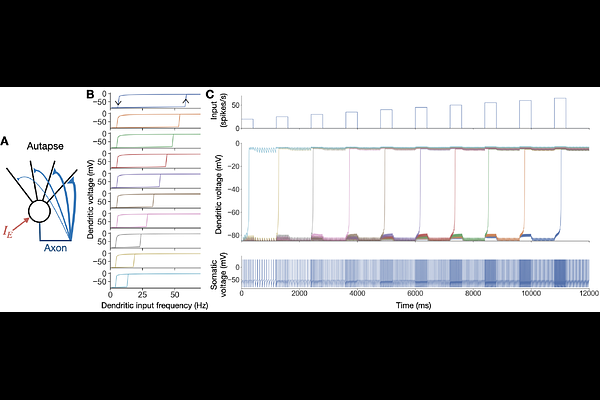Robust maintenance of both stimulus location and amplitude in a working memory model based on dendritic bistability

Robust maintenance of both stimulus location and amplitude in a working memory model based on dendritic bistability
Xu, J.; Cox, D.; Goldman, M. S.; Luck, S. J.
AbstractWorking memory is a core feature of cognition that enables items to be maintained and manipulated over short durations of time. Stored information can be binary, such as the presence or absence of an object, or multivalued, such as the graded intensity or location of a feature. Remarkably, there are currently no computational models of working memory that can robustly maintain both the graded intensity and spatial location of a stored item. Here, we show how this limitation can be overcome if neurons contain multiple bistable dendritic compartments. We first illustrate the core mechanism in a simple network architecture for both a spiking model with conductance-based dendrites and a rate-based model that permits analytic understanding. We then implement this mechanism within a ring model architecture for spatial working memory, in which neurons are arranged in a one-dimensional line or ring such that the spatial location of an item is encoded by the set of neurons that are active. In contrast to classic ring models, which encode the binary presence and continuous location of an item, we show that the multi-dendrite-neuron model can robustly (without fine tuning and with minimal drift in response to noise) encode both the amplitude and the location of an item in working memory. This work provides a solution to the problem of encoding graded information in spatial working memory and demonstrates how dendritic computation can increase the capacity and robustness of working memory.